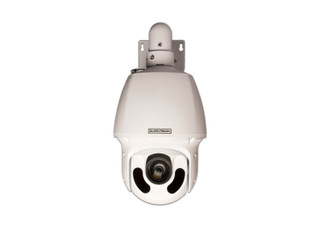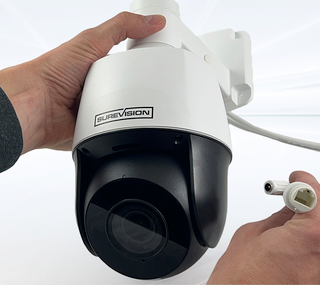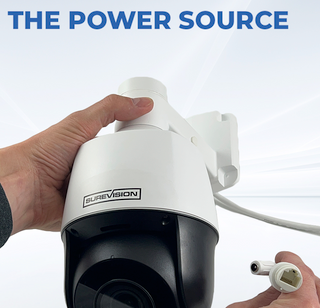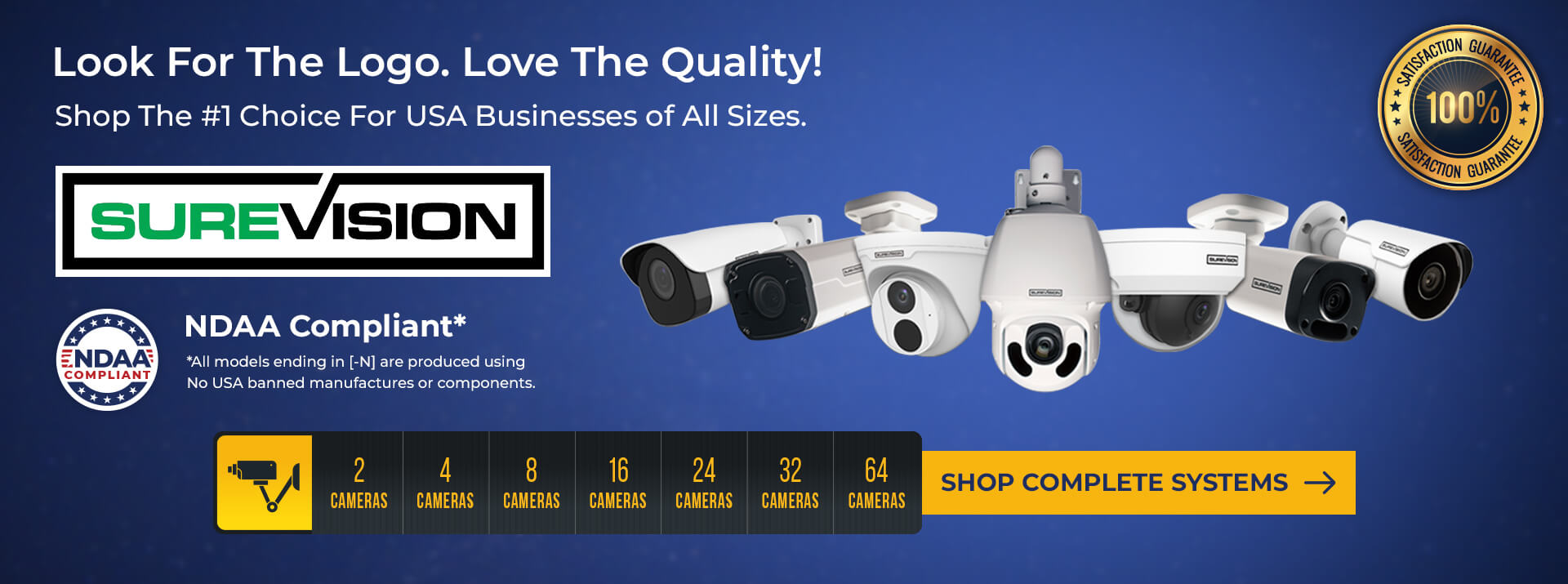The Ultimate Guide to PTZ Cameras
Jun 4, 2023
Introduction
Whether you're a business owner looking to enhance your security system or a homeowner hoping to keep a closer eye on your property, PTZ cameras are an excellent choice. PTZ, short for Pan-Tilt-Zoom, cameras offer advanced features that provide enhanced surveillance capabilities. In this ultimate guide, we will delve into the world of PTZ cameras, exploring their functionalities, benefits, and how you can make the most of these intelligent devices. From understanding the basics to mastering the advanced settings, this comprehensive guide will equip you with the knowledge you need to harness the power of PTZ cameras.

Table of Contents
- What Are PTZ Cameras?
- How Do PTZ Cameras Work?
- Benefits of PTZ Cameras
- Choosing the Right PTZ Camera
- Installation and Placement Considerations
- Managing PTZ Camera Controls
- Advanced Features and Customizations
- Integrating PTZ Cameras with Other Security Systems
- Troubleshooting and Maintenance
- Conclusion and Next Steps
1. What Are PTZ Cameras?
PTZ cameras, as mentioned earlier, refer to cameras that offer Pan, Tilt, and Zoom functionalities. They are versatile surveillance devices capable of covering vast areas, tracking moving subjects, and providing close-up views of specific locations. Unlike traditional fixed cameras, PTZ cameras can be remotely controlled, offering increased flexibility and efficiency in monitoring.
2. How Do PTZ Cameras Work?
PTZ cameras come equipped with motors that allow them to pan horizontally, tilt vertically, and zoom in or out. These motors are controlled either manually or through automated systems. By using a combination of these movements, PTZ cameras provide full coverage of the designated area. Some high-end models even include advanced features like auto-tracking, which enables the camera to follow moving objects automatically.
3. Benefits of PTZ Cameras
PTZ cameras offer several advantages over traditional fixed cameras, making them a popular choice for businesses and homeowners alike.
a. Enhanced Coverage
With the ability to pan, tilt, and zoom, PTZ cameras can cover a larger area compared to fixed cameras. This feature is particularly useful in surveillance scenarios where covering vast spaces is essential.
b. Tracking Capabilities
The ability to track moving objects is one of the key benefits of PTZ cameras. This feature allows for real-time monitoring and keeping a close eye on any suspicious activity within the camera's range.
c. Flexibility and Efficiency
The remote control capabilities of PTZ cameras make them highly efficient for surveillance purposes. Operators can easily manipulate the camera movements, zoom in for closer inspection, and focus on specific areas of interest.
d. Deterrence Factor
The mere presence of PTZ cameras can act as a deterrent to potential criminals. The ability to track their movements and capture clear video footage increases the chances of identifying and apprehending perpetrators.

4. Choosing the Right PTZ Camera
When selecting a PTZ camera for your business or home, it's important to consider several factors to ensure you make an informed choice. Consider the following aspects:
a. Camera Resolution
Opt for PTZ cameras with high resolutions to ensure clear and detailed video footage. High-definition and 4K options are now widely available and offer superior image quality.
b. Zoom Capability
Check the camera's zoom capabilities, both optical and digital. Optical zoom provides better image quality as it adjusts the camera lens, while digital zoom enlarges a portion of the image, sacrificing some details.
c. Low-Light Performance
Evaluate the camera's low-light performance, especially if you need surveillance during nighttime or in poorly lit areas. Look for cameras with features such as infrared (IR) illumination or low-light optimization.
d. Durability and Weather Resistance
If you plan to install the PTZ camera outdoors, ensure it is built to withstand harsh weather conditions and has appropriate IP (Ingress Protection) ratings. This way, the camera can continue operating reliably in various environments.
e. PTZ Speed and Range
Consider the speed at which the camera can pan, tilt, and zoom. Faster speeds are desirable for active surveillance scenarios. Additionally, look at the range of movement the camera offers to ensure it covers the desired area effectively.
f. Connection and Integration Options
Check for compatibility with your existing security infrastructure. Some PTZ cameras offer various connectivity options such as Ethernet, Wi-Fi, or even integration with video management systems.

5. Installation and Placement Considerations
To make the most of your PTZ camera's capabilities, proper installation and strategic placement are essential. Here are a few considerations to keep in mind:
a. Height and Angle
Position the camera at an appropriate height and angle to maximize its coverage. Placing it too high may result in insufficient details, while positioning it too low may limit the viewable area.
b. Avoid Obstructions
Ensure there are no obstructions in the camera's field of view that may impede its functionality. Trees, walls, or other physical barriers should be taken into account during placement.
c. Lighting Conditions
Pay attention to the surrounding lighting conditions. Avoid placing the camera directly facing a light source, as it may cause glare or wash out the image. Instead, position it to utilize the available lighting effectively.
d. Weather Protection
If installing the camera outdoors, use weatherproof enclosures or opt for cameras specifically designed for outdoor use. This protects the camera from environmental factors like rain, snow, and extreme temperatures.
e. Secure Mounting
Ensure the camera is securely mounted to prevent any tampering or vandalism attempts. Sturdy mounting options, such as poles or brackets, can deter unauthorized interference.
6. Managing PTZ Camera Controls

Controlling PTZ cameras effectively is crucial to taking full advantage of their capabilities. Familiarize yourself with the various control options available:
a. Manual Control
Most PTZ cameras offer manual control, either through a physical joystick or a software-based control panel. Take the time to learn and practice these controls to move the camera smoothly and accurately.
b. Preset Positions
PTZ cameras often allow you to set and name specific positions for quick access. By predefining frequently monitored areas or preferred viewing angles, you can instantly navigate to these positions with a simple click.
c. Guard Tours and Patterns
Some advanced PTZ cameras enable the creation of guard tours or patterns, where the camera automatically moves through a series of preset positions at designated intervals. This feature is useful for patrolling multiple areas or creating a continuous monitoring loop.
d. Auto-Tracking
Certain PTZ cameras leverage intelligent algorithms to track moving objects automatically. This feature eliminates the need for manual control, ensuring that the camera focuses on any detected movement without operator intervention.
7. Advanced Features and Customizations

While PTZ cameras offer a wide range of advanced features, customizations, and settings, it's crucial to understand how to utilize them effectively. Explore the following options:
a. Auto-Focus and Image Stabilization
Ensure your PTZ camera is equipped with auto-focus capabilities and image stabilization to maintain sharp and stable video footage. These features are particularly useful when zooming in for close-ups.
b. Privacy Masking
Privacy masking allows you to conceal specific areas within the camera's view. This feature is beneficial when monitoring sensitive areas that should not be captured by the camera.
c. Motion Detection and Alarms
Leverage the motion detection capabilities of PTZ cameras to trigger alarms or notifications when movement is detected. This ensures immediate attention to potential security threats.
d. Scheduled Tasks
Utilize the camera's scheduling feature to automate specific tasks, such as switching between guard tours or adjusting camera positions based on time of day. This improves efficiency and reduces human intervention.
e. Two-Way Audio
Some PTZ cameras come equipped with built-in microphones and speakers, enabling two-way audio communication. This feature allows live interaction with individuals within the camera's range, adding an extra layer of functionality.
8. Integrating PTZ Cameras with Other Security Systems
To create a comprehensive security solution, it's essential to integrate PTZ cameras with other security systems. Consider the following integrations:
a. Video Management Systems (VMS)
Connect your PTZ camera to a VMS to streamline video management and enhance overall surveillance capabilities. VMS software allows you to view, record, and manage multiple cameras from a centralized platform.
b. Intrusion Detection Systems (IDS)
Integrate your PTZ cameras with IDS solutions to trigger camera movements and focus on areas where security breaches are detected. This synchronization helps capture critical moments during security incidents.
c. Access Control Systems (ACS)
Linking PTZ cameras with ACS solutions provides additional context when monitoring access points. By combining video footage with access control events, you can review specific incidents comprehensively.
9. Troubleshooting and Maintenance
Like any electronic device, PTZ cameras may encounter issues or require regular maintenance. Here are some troubleshooting tips and maintenance guidelines:
a. Regular Inspections and Cleaning
Perform routine inspections of the camera, lens, and housing to ensure they are clean and free from any debris. Regularly clean the lens and adjust the focus if necessary, as dirt or smudges can affect image quality.
b. Firmware Updates
Keep your PTZ camera's firmware up to date by periodically checking for manufacturer updates. Firmware updates often bring performance improvements, bug fixes, and new features.
c. Power and Connectivity Checks
Always verify the camera's power source and ensure it is connected correctly. Additionally, check the network or video cables for any loose connections that might disrupt the camera's functionality.
d. Troubleshooting Common Issues
If you encounter any issues with your PTZ camera, consult the manufacturer's troubleshooting guide or contact their support for assistance. Common problems include communication errors, motor failures, or poor image quality.
10. Conclusion and Next Steps
In this ultimate guide, we explored the world of PTZ cameras, their functionalities, and the benefits they offer to business owners and homeowners. From understanding the basics to mastering advanced settings, you should now have a solid foundation to effectively utilize PTZ cameras for enhanced surveillance and security. Remember to choose a PTZ camera that suits your specific needs, install it strategically, and make the most of its features through effective control and customizations. By integrating your PTZ camera with other security systems, you can create a comprehensive solution that ensures the safety and peace of mind you desire. Keep an eye out for the latest advancements in PTZ camera technology, and continue to explore additional resources to stay ahead in the ever-evolving world of surveillance.
Questions? Visit CCTV Security Pros online or call us today.





